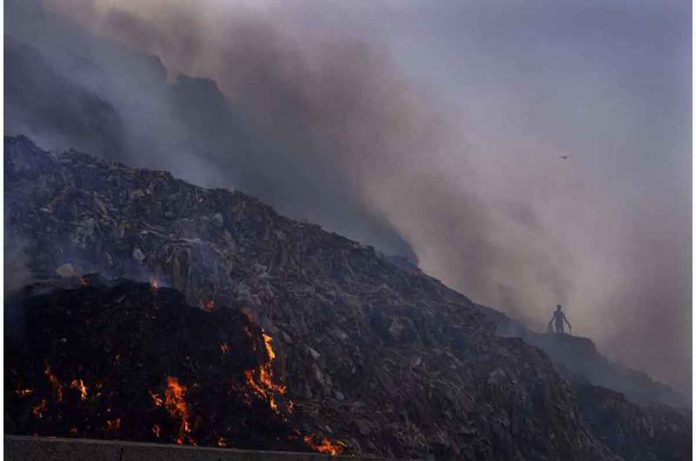According to one study, landfills emit large amounts of planet-warming methane gas into the atmosphere as waste decomposes, and they are a significant contributor to such emissions in urban areas.
Scientists used satellite data from Delhi and Mumbai in India, Lahore in Pakistan, and Buenos Aires in Argentina to identify specific locations in each city that emit high levels of methane on a regular basis, all of which were landfills. Overall methane emissions from all sources in the cities were 1.4 to 2.6 times higher than previously estimated.
The study, which was published on Wednesday in Science Advances, aims to assist local governments in carrying out targeted efforts to limit global warming by identifying specific sites of major concern.
Methane is released into the atmosphere when organic waste such as food, wood, or paper decomposes. After oil and gas systems and agriculture, landfills are the third-largest source of methane emissions globally.
Although methane accounts for only about 11% of greenhouse gas emissions and only lasts about a dozen years in the atmosphere, it traps 80 times more heat than carbon dioxide. Scientists estimate that methane from human activities is responsible for at least 25% of today’s warming.
“This is the first time high-resolution satellite images have been used to observe landfills and calculate methane emissions,” said JoannesMaasakkers, the study’s lead author and an atmospheric scientist at the Netherlands Institute for Space Research.
“We discovered that these landfills, which are relatively small in comparison to city sizes, account for a significant portion of total emissions from a given area,” he said.
Satellite data for detecting emissions is still a relatively new field, but it is increasingly being used to monitor gases all over the world. It means that more independent organisations are tracking greenhouse gas emissions and identifying major emitters, whereas previously, only local government figures were available.
“This new work demonstrates how critical it is to improve landfill management, especially in countries like India where landfills are frequently on fire, emitting a wide range of damaging pollutants,” said Euan Nisbet, an Earth scientist at Royal Holloway, University of London who was not involved in the study.
Earlier this year, smoke hung over New Delhi for days after a massive landfill caught fire during a heat wave with temperatures exceeding 50 degrees Celsius (122 Fahrenheit). This year, at least two other landfill fires have been reported in India.
Nisbet went on to say that newer satellite technology, in conjunction with on-the-ground measurements, makes it easier for researchers to determine “who is polluting the world.”
According to a recent International Energy Agency study, China and India are the world’s largest methane polluters.
104 countries signed a pledge to reduce methane emissions by 30% by 2030 compared to 2020 levels at last year’s United Nations climate conference. India and China are both non-signatories.
In future studies, the authors intend to conduct additional research into landfill sites around the world.
“It’s a rapidly developing field, and we expect more interesting data to emerge soon,” Maasakkers said.

